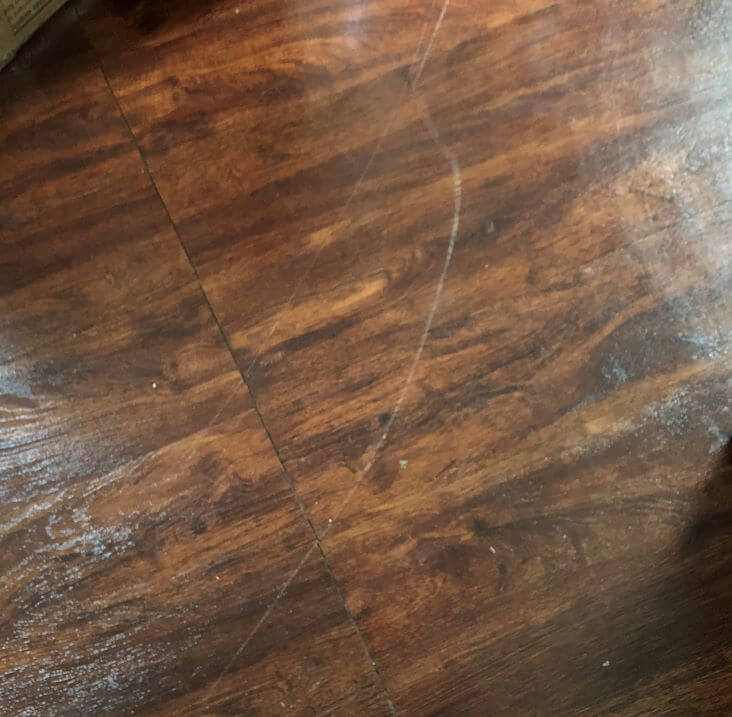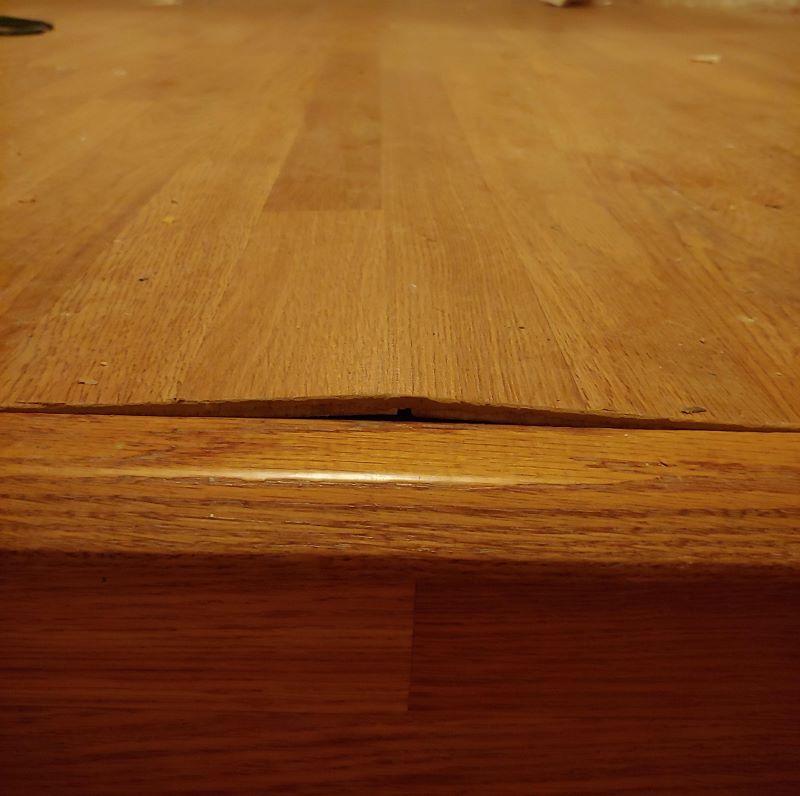If you’re thinking about installing laminate floors in your house, you have probably heard about the need to acclimate the flooring to the room. Acclimating is the process of bringing the floor material into its new environment and letting it sit there to adjust to the climate.
Acclimating has always been an important part of the process for wood floors, but it can actually be just as important for the newer laminate floors. Failing to acclimate your floor could lead to damage and might void the warranty.
Does Laminate Flooring Need to Acclimate?
Yes, laminate flooring definitely needs time to acclimate to the room before you install it.
This is especially important if the flooring is coming from storage under different conditions than the house. If the flooring has been on a hot truck for three days and you install it in an air-conditioned house, it is going to be shocked by the change.
Why does laminate flooring need to acclimate in the first place? It’s because it has a fiberboard core made of a wood-based composite material. Wood, even when it’s processed into laminate fiberboard, keeps its natural tendencies to expand and contract.

Wood and wood products expand or contract when the temperature or humidity around them changes. This is why you also need to install laminate floors with an expansion gap between the flooring and the walls, to allow for the floor to grow or shrink when the seasons change.
You need to acclimate laminate floors to their new home because if you bring them right in and install them without acclimating, the installation will not hold up. It will look perfectly fine at first, but when the flooring material finally adjusts to the humidity and temperature in the room, it will either expand or contract abruptly. This can cause gaps to form or make the flooring misshapen.
Failing to acclimate properly can cause an uneven or ugly floor a year down the road. More importantly, you will be left without the protection of a warranty if you don’t follow the manufacturer’s directions for acclimating the material (most of the time, they want you to acclimate the flooring for 48 hours or more).
How Long Does Laminate Flooring Need to Acclimate?
Laminate flooring needs at least 48 hours to acclimate before you start installing it, but it can often take 72 hours or longer.
The number one factor to help you decide how long to acclimate your flooring is the warranty information that you can get from the product packaging, sales sheet, or website.
Flooring manufacturers know that acclimating the flooring properly is one of the most important ways to make sure the floor stays strong and beautiful throughout its lifespan. They will recommend a certain number of “hours before installation” for their product based on its thickness, composite material, etc.
So read the directions first, but if you have any special circumstances you can extend the time by 24 hours to be safe.
Note: Acclimating is more complicated than just a simple length of time. You also need to prepare the house ahead of time and lay the flooring out in a way that it can acclimate effectively. Keep reading to discover all the steps you should take for your new floor.
How to Acclimate Laminate Flooring
Since acclimatizing laminate flooring is a somewhat natural process, it’s not an exact science. This section will tell you the guidelines you can follow to successfully acclimate your new laminate flooring. If you do all of these, your flooring will be ready to install right and it will look great for years. These guidelines can even speed up the process.
Give Yourself Enough Time
The first step in a good laminate flooring installation is having the right expectations and planning ahead.
You probably want to get your installation over with as quickly as possible so you can enjoy the new floor you’ve paid for and avoid living in a construction zone any longer. However, don’t make the mistake of skipping acclimating time just because you get in a hurry.
Plan to get the flooring into the house two or three days before the day you want to install it. It takes a little patience to do things right, but it will be worth it.
Make sure to talk to your flooring salesman and any contractors involved about acclimating the flooring so it can be delivered a couple of days before you plan to install it.
Make Sure the Room is at Normal Living Conditions
When you’re acclimating the laminate flooring to your house, you need to think about the temperature and humidity conditions of the house. When you’re living in the house, it’s going to be relatively dry and a comfortable temperature most of the time. These are the conditions you need to acclimate the new flooring to.
If the house is newly constructed, you shouldn’t put the flooring in the house until the windows and doors are installed and any air conditioner or furnace system is installed and running. These create realistic air conditions in the home.
Watch out for excessive humidity sources. This could include construction projects like a newly-poured concrete slab or smaller sources like wet paint. Materials like this go into the house wet and then dry over time. This slow drying raises the humidity in the house.
You should wait about 2 months before installing a laminate floor over new concrete, and about 3 days after painting the inside of your house. It’s also important to have some ventilation to speed these times up.
Make sure the temperature is moderate in the house before you go installing laminate flooring, too. If you’re not living in the house, it may be as hot or cold as the outdoor temperatures in there. Acclimate laminate flooring only after you have had the air conditioner or furnace running like normal for at least 3 days.
The temperature should be somewhere between 60F and 85F degrees, and the humidity should be between 25% and 75%. Note that the subfloor itself should also fall within these ranges.
You’ll notice that those numbers give you quite a bit of wiggle room. You just need to avoid extremes and get the temperature and humidity pretty close to where it will be when the house is actually being lived in because these are the conditions that the flooring will spend most of its life in.
Test the Humidity on a Concrete Floor
If you are installing laminate flooring over a fairly new slab of concrete or in a damp concrete room, you need to check the humidity of the concrete itself.
You can use a digital meter to give you a moisture percentage, but if you don’t have one of those you can perform a simple test using a plastic garbage bag.
Cut a large plastic bag along one seam and then unfold it to make a bigger surface (you can also just use a piece of plastic painter’s cloth). Take some sort of tape and attach the plastic sheet directly to the concrete floor. Spread the sheet out and tape all the edges so you form a complete seal.
After 24 hours, come back and peel up the tape. If there is any moisture on the underside of the plastic, you probably have too wet of conditions for a successful laminate installation.
A dry plastic sheet means the concrete is dry and has no moisture problems — it should be safe to acclimate and install laminate flooring in that room.
If this test shows a moist concrete floor, get a flooring meter for more precise measurements or wait longer to bring in your flooring. It’s likely too wet for acclimating. If you can’t dry the room out, you may need some other type of flooring that is not as finicky as laminate and wood (i.e. vinyl or tiles).
Open the Cartons
When you get your new laminate flooring, it will most likely come to you in cardboard cartons shrink-wrapped with plastic. This protects the flooring in shipping, but it can slow down the acclimating process.
To speed up acclimating when the flooring gets to your house, cut the shrink wrap open and fold the sides of the cartons down so that air can get to the floorboards from all directions. Exposing the wood to the air in the room will help it acclimate.
Stack Laminate Flooring for Airflow
If you’re really in a time crunch to get your flooring acclimated, you can remove it from the carton entirely and stack it up for maximum airflow.
Lay out three or four boards side by side, a few inches apart, forming a square. Then place the same number of boards on top of the first ones, only alternate the direction. Keep placing perpendicular layers on top, leaving several inches between any adjacent boards.
This will leave a lot of gaps for air and help your laminate adjust to the room’s conditions as fast as possible.
When stacking your flooring, remember to make a flat and even stack. Just be sure to support each board enough so it doesn’t sag in the middle. You can put a permanent bend in the laminate planks if you let them sag or twist during the acclimating process, so be careful.
Use a Moisture Meter to Test the Water Content
If you don’t mind buying a special tool, you can test the moisture content in your laminate flooring to make sure it’s well enough acclimated to the room.
Use the prongs on the tester to measure the underside of several pieces of laminate flooring to find the average moisture level.
Then, use the meter to test the subfloor for its moisture content (again, test several different spots around the room to find the average).
The reading you get from the flooring and the reading you get from the subfloor material should be within about 2% of each other. This tells you that the new flooring is completely acclimated to the room’s humidity conditions. If the two values differ by more than 5% humidity, you need to wait longer for your flooring to acclimate.
If you find that the flooring and subfloor are of the same humidity before you give them time to acclimate, still remember to follow your flooring product’s installation instructions and wait the 24-48 hours required to guarantee your warranty.




